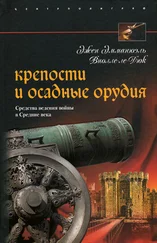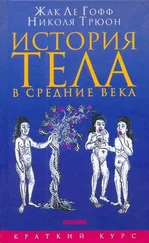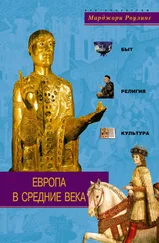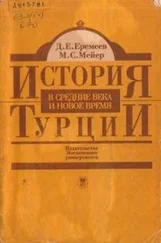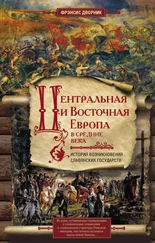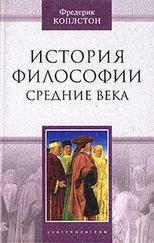Н Пигулевская - Культура сирийцев в средние века
Здесь есть возможность читать онлайн «Н Пигулевская - Культура сирийцев в средние века» весь текст электронной книги совершенно бесплатно (целиком полную версию без сокращений). В некоторых случаях можно слушать аудио, скачать через торрент в формате fb2 и присутствует краткое содержание. Жанр: История, на русском языке. Описание произведения, (предисловие) а так же отзывы посетителей доступны на портале библиотеки ЛибКат.
- Название:Культура сирийцев в средние века
- Автор:
- Жанр:
- Год:неизвестен
- ISBN:нет данных
- Рейтинг книги:4 / 5. Голосов: 1
-
Избранное:Добавить в избранное
- Отзывы:
-
Ваша оценка:
- 80
- 1
- 2
- 3
- 4
- 5
Культура сирийцев в средние века: краткое содержание, описание и аннотация
Предлагаем к чтению аннотацию, описание, краткое содержание или предисловие (зависит от того, что написал сам автор книги «Культура сирийцев в средние века»). Если вы не нашли необходимую информацию о книге — напишите в комментариях, мы постараемся отыскать её.
Культура сирийцев в средние века — читать онлайн бесплатно полную книгу (весь текст) целиком
Ниже представлен текст книги, разбитый по страницам. Система сохранения места последней прочитанной страницы, позволяет с удобством читать онлайн бесплатно книгу «Культура сирийцев в средние века», без необходимости каждый раз заново искать на чём Вы остановились. Поставьте закладку, и сможете в любой момент перейти на страницу, на которой закончили чтение.
Интервал:
Закладка:
According to the original design, N. V. Pigulevskaya's book was to have consisted of three large chapters; the author's death, however, left this project unfulfilled. In Chapter 3, "The Spread of Syrian Culture", she planned to deal with the cultural activities of the Syrians in India, Central Asia, the Far East and Europe, which she linked to the major role the Syrians had played in the world trade and economy. She intended to assemble and present all data pertaining to the Syrians' trade and settlements along such important routes as the Great Silk Route and the Incense Road.
Chapter I, "Medieval Education of Syrians. The Syrians and Learning", consists of two large sections. The first deals with the content of Syrian culture at the educational level, presenting an ample exposition, based on Syrian sources (some of them unique), of the history of medieval Syrian schools, the organisation of education, the scope of the curriculum, the teaching methods and the activities of prominent teachers and educators. N. V. Pigulevskaya starts with a description of the initial stage in the teaching process, viz., the teaching of reading and writing. Elementary schools of the Syrians resembled {245} the parish and monastery schools of the Latin West, the Greek East and all the Slav countries. Both the curriculum and the teaching methods used in elementary education were not only preserved over many centuries but had international features: in Osrhoene as throughout the Christian world, education began with the study of the Psalms. Further studies concentrated on the Scriptures as a whole, but especially on the New Testament and its interpretation. School education, therefore, was basically clerical. Yet the Syrians were interested in secular sciences as well. This interest was promoted by their wide-ranging commercial ties, which made literacy indispensable, and the needs of production, which encouraged the development of complex technical knowledge, such as alchemistry, geography and agronomy. A certain amount of professional learning was also required of physicians and master craftsmen.
Elementary school was the first step towards special education, ecclesiastical as well as secular. In a special section devoted to the characterisation of the sources on the history of higher education of the Syrians, N. V. Pigulevskaya examines first of all the Nisibis Academy Statutes. This unique record of Syrian culture contains information on such aspects of the early medieval higher school as its structure and the living conditions, customs and habits of students and teachers. Reflected in it was a striving for a reform of the higher education and a discontent of the students. The author then proceeds to describe Barhadbeshabba ?Arabaya's treatise The Reason of the Foundation of Schools and An Ecclesiastical History, which supplement the Statutes, and cites new facts as well. The Reason of the Foundation of Schools contains two parts, the theoretical one presenting a philosophical analysis of the cognition of the world, and the other dealing directly with school life.
N. V. Pigulevskaya pays special attention to the Academy of Nisibis, the medieval Syrian university. She offers a detailed account of the history of that school and its activities, basing her research on the two sources mentioned above. Her book also contains the first translation into Russian of the Statutes of the Academy of Nisibis.
In the second section of Chapter 1, the author gives a circumstantial analysis of the Syrians' achievements in philology, philosophy, medicine, geography, cosmogony, alchemistry and agronomy. This is supplemented by portraits of a number of prominent Syrian men of learning: Bar Daisan, a scholar, philosopher and poet; Afrahat the Persian Sage, an exegetist and philologist; Ephraim the Syrian, a poet of great talent who {246} exerted a profound influence on the subsequent development of Christian literature; Sergius of Resh'aina, a physician reknowned for his extensive theoretical knowledge and practical activities. The author focuses especially on the Syrians' accomplishments in the field of translation, as a result of which links were established between the learning of ancient classical Greece and medieval Arabic, Indian and Iranian learning, and then, through the medium of the Arabs, with learning in Western Europe.
Chapter 2, "The Empire. Iran and the Syrians", analyses in detail the spread of Syrian culture in the Middle East and its. interaction with the Greek and Iranian cultures, an interaction resulting from the economic and political position of northern Mesopotamia and the active role the Syrians played in political life and international trade. N. V. Pigulevskaya's prime concern is ideology, namely, the political causes underlying the spread of two different trends of Christianity - the Nestorian and the Monophysite. Christianity became the official religion of northern Mesopotamia at a rather early period, hence the area's important role in the dissemination of the new faith. The author dwells upon the origins of Syrian Christianity, which is usually linked with the activities of the Apostles Addai and Thomas. The tradition tracing it to Addai was older and more deeply rooted, and as such it was mentioned in such Syrian literary compositions as The Doctrine of 'Addai and The Acts of St Mari, Apostle of the Orient. The latter apocryphal text mentions the evangelisation of a number of Iranian provinces as part of the Apostles' activities. N. V. Pigulevskaya also analyses the early Syrian martyria: The Acts of Sharbil and Barsamya, which describe the actual situation in the area in the 3rd-4th centuries and are of interest to the historian of Syrian literature and culture, of the time. Discussed in this context is also a late 4th-century Acts of the three martyrs from Edessa - Gurya, Shemona and Habib.
As Christianity took firm root in Osrhoene, a region of ancient cultural traditions, this encouraged the spread of the new religion to Iran. Another contributing factor to this process was the political opposition of the Byzantine Empire and Iran. For some time, Christianity did not make much of an impact in Iran, and persecution of the Christians only began in the wake of the militant religious policy started by the Sasanids. N. V. Pigulevskaya's detailed analysis of the history and causes of the persecution of Iranian Christians is corroborated by the hagiographic cycle devoted to the martyrs of the "great persecution". The author concludes that the anti-Christian action was induced by the ideological affinity of Iranian Christians {247} with Byzantium, on the one hand, and by the opportunities to seize the property of the executed Christian Syrians, who belonged to the urban communities of traders and craftsmen. Yet, despite persecution, Christian communities in Iran, dominated as they were by the Syrians, continued to exist and develop: a hierarchic structure came into being, Christian writings in the Syrian language gained currency, and even the dogmas underwent certain revision. In the 5th century, the Christian Church in Iran was remodeled after the Byzantine; it recognised the Nicene Creed and elected, with the approval ans of the Shahanshah, a Catholicos as its head.
Thanks to the mediation of Syrian Christians, who were well endowed to carry out political missions, diplomatic relations were gradually established between Iran and Byzantium. N. V. Pigulevskaya closely follows the ideological conflicts within the Syrian-Persian Church in the 5th century, which reflected the current social and political struggle, and offers vivid character sketches of the participants in those dogmatic disputes. Thus, she examines the activities of Bar Sauma, who favoured Nestorianism and was therefore sharply anti-Monophysite. There is an account of the Nestorian Patriarch mar Abha I, a prominent representative of Syrian culture, as well as descriptions of such men as Ishoyahbh I, Sabhrisho, Ishoyahbh III, and Henanisho I.
Читать дальшеИнтервал:
Закладка:
Похожие книги на «Культура сирийцев в средние века»
Представляем Вашему вниманию похожие книги на «Культура сирийцев в средние века» списком для выбора. Мы отобрали схожую по названию и смыслу литературу в надежде предоставить читателям больше вариантов отыскать новые, интересные, ещё непрочитанные произведения.
Обсуждение, отзывы о книге «Культура сирийцев в средние века» и просто собственные мнения читателей. Оставьте ваши комментарии, напишите, что Вы думаете о произведении, его смысле или главных героях. Укажите что конкретно понравилось, а что нет, и почему Вы так считаете.


